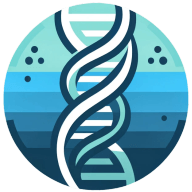6 Ways Citizen Science Uses Dna Sequencing to Engage the Public
DNA sequencing is revolutionizing the way we monitor biodiversity and engage with the environment. By tapping into the power of citizen science, everyday individuals are contributing to groundbreaking discoveries in species conservation and disease detection. This collective effort is not only advancing scientific research but also fostering a deeper connection between communities and the natural world.
- Collect eDNA for Biodiversity Monitoring
- Track Biodiversity with Environmental DNA
- Identify Species for Conservation
- Detect Wildlife Disease Outbreaks Early
- Map Genomes of Invasive Species
- Discover New Species with Genetic Analysis
Collect eDNA for Biodiversity Monitoring
One intriguing example of using DNA sequencing in citizen science can be found in the "eDNA" projects. These projects allow people to collect environmental DNA samples from their local water bodies to help scientists monitor biodiversity. Participants gather water samples, which are then analyzed for the DNA of various aquatic organisms. This helps in identifying the species present in that ecosystem without seeing them directly, supporting efforts in ecological assessment and conservation.
What makes this approach so effective is its simplicity and inclusiveness. Anyone with access to a body of water can participate, making it an excellent tool for education and increasing scientific literacy among the public. It demystifies the complex process of DNA sequencing by connecting it to everyday environments and tangible results. Moreover, these projects generate large datasets that are invaluable for researchers, driving forward our understanding of aquatic ecosystems and encouraging a collaborative relationship between scientists and the public. This synergy not only furthers scientific research but also fosters a deeper appreciation and concern for local and global environmental issues.

Track Biodiversity with Environmental DNA
DNA sequencing in citizen science projects allows scientists to accurately track biodiversity through environmental DNA. Participants collect water, soil, or air samples, which are then analyzed for traces of DNA from various organisms. This helps to measure the variety of life in an area and detect any changes over time.
It is a practical approach to monitoring ecosystems without needing to directly observe every species. More people should join these projects to help preserve our planet's biodiversity.
Identify Species for Conservation
Citizen science programs use DNA sequencing to identify species that need conservation efforts. Volunteers gather samples from different habitats and scientists sequence the DNA to determine which species are present and in what numbers. This data is crucial for understanding which species are endangered or at risk.
By recognizing these threats, conservation plans can be developed and implemented effectively. Getting involved in such initiatives can make a difference in protecting vulnerable species.
Detect Wildlife Disease Outbreaks Early
Monitoring disease outbreaks in wildlife is another way DNA sequencing is used in citizen science. People collect samples from animals or their environments, which are then examined for pathogens. This helps in detecting diseases early and understanding their spread among wildlife populations.
Early detection can prevent outbreaks from becoming widespread and affecting more species. Participate in these projects to help keep our wildlife healthy.
Map Genomes of Invasive Species
DNA sequencing helps map the genome of invasive species through citizen science projects. Participants collect and send samples for genetic analysis, allowing scientists to study the genetic makeup of these species. Understanding their genome is key to managing and controlling their spread.
It provides insights into how invasive species adapt and thrive in new environments. Take action by joining these studies to aid in controlling invasive species.
Discover New Species with Genetic Analysis
Citizen science projects use genetic analysis to discover new species. By sequencing DNA from samples collected by volunteers, scientists can identify organisms that have not been previously recorded. This is important for increasing our understanding of biodiversity and ecosystem health.
Each new discovery adds to our knowledge of life on Earth. Be part of this exciting field to uncover the unknown diversity around us.

